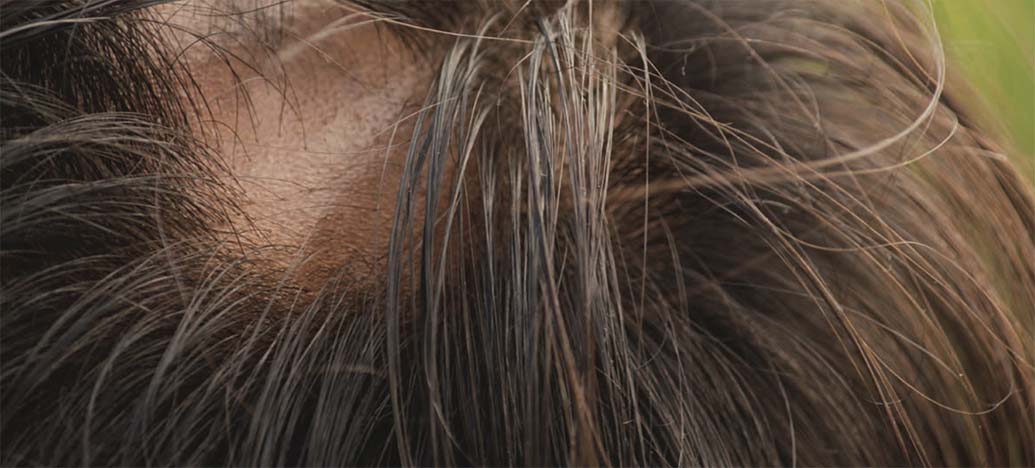Hearing Our Patients With Alopecia Areata

Hair carries a significant meaning across cultures around the world. In Indigenous cultures, the hair can be a physical symbol of their spirit, a connection to their ancestry, or a source of strength.1 Black communities have seen a reemergence of the Natural Hair Movement, reclaiming their identity in white-centric definitions of beauty.2 Similar to Muslim women, Sikh men do not believe their hair should be visible in public.3 Thus, conditions such as alopecia areata (AA) can be incredibly impactful on the quality of life of the estimated 700,000 people with the condition.4-7 According to Brittany G. Craiglow, MD, FAAD, dermatologists can offer much-need emotional support and a practical approach to their disease for patients living with AA.
“Patients with AA and their families have so many questions about a lot of different things, and there are many ways that we as dermatologists to make visits more useful for them,” she said. Dr Craiglow is a board-certified dermatologist practicing with Dermatology Physicians of Connecticut in Fairfield and adjunct associate professor at Yale University in New Haven, CT. While she specializes in pediatric dermatology, including inflammatory diseases and keratinization disorders, her recent research has looked heavily into AA and emerging advanced therapies. Dr Craiglow offered a few pearls for your next examination room conversation with a patient with AA.
 Listen First, Treat Second
Listen First, Treat Second
“First and foremost, it is important for our patients to feel heard,” started Dr Craiglow. “Many of these patients will say they have felt dismissed or had their experienced minimized when people tell them, ‘oh it’s just hair’ or ‘at least you’re not sick.’ While those things may come from a good place, ultimately they are not helpful – it’s really toxic positivity.”
“Too often AA and other types of hair loss disorders are thought of by many, especially payers, as a cosmetic disease, but treating AA is not cosmetic at all. When we try to help somebody regrow their hair, we’re not looking to enhance their appearance, we’re just trying to restore their normal.” Dr Craiglow pointed to an article by Korta et al8 that tries to convey the critical impact misunderstanding of the pathomechanism of AA, including the T cells and the pathways and cytokines involved, can have on patients and the treatment process.
Dermatologists should listen to the patient with AA and their family and validate any feelings they may have about the disease. “I will say to families, ‘look, this this is hard. It’s hard for everybody. It’s okay and normal to feel upset about it,’” added Dr Craiglow. This small acknowledgement can reassure the patient and build the trust needed to tackle the other aspects of care. “With AA, the impact on quality of life is unique. It’s very human to have hair on your body, eyebrows, and eyelashes. Some patients describe not feeling as human without those hairs. These patients or their caregivers are often seeking to understand the reason they developed AA—was it something they did or did not do to cause it to happen?—but we have to explain that they have a genetic predisposition to this disease just like any other autoimmune disease,” continued Dr Craiglow. “But what is hard is we do not understand the triggers very well, and that can be frustrating for patients. One thing that can be useful is helping people to move away from the why and instead focus on how we are going to move forward, especially with treatment.”
When discussing treatment options, a level of transparency with the patient can be important in managing expectations with treatment and responses. “Anecdotally, I find that the majority of patients are willing to accept a level of risk associated with treatment in order to have the chance of getting their hair back,” she added.
A recent article in Advances in Therapy analyzed the treatment patterns, health care resource utilization, and comorbidities of patients with AA in the United States by looking at insurance claim data.9 Most patients (55.8%) were prescribed a treatment for their AA or other comorbid autoimmune and/or inflammatory disease within 12 months’ follow-up. However, this also meant that 44.2% were not prescribed any sort of treatment in the year following their diagnosis, pointing to an undertreatment of the condition among this patient population. Per the insurance data by 12 months’ follow-up, most patients had been prescribed topical steroids (80.3%), oral steroids (30.0%), systemic antihistamines (6.2%), and topical nonsteroids (5.7%). Advanced therapies, such as systemic immunomodulators were only utilized in 3.6% of patients at follow-up. The authors9 concluded that these results underscore the need for FDA-approved, long-term treatment options for AA.
“Ultimately, the goal will be to have therapies that are not only effective but also have a favorable safety profile,” said Dr Craiglow. In her practice, she shares with patients and their caregivers the side effects and goals of treatment, but she has a few personal rules that form her approach to care for patients, particularly children, with AA.
“Number one is that the treatment should never be worse than the disease,” said Dr Craiglow. This is a good rule of thumb for all dermatologic diseases in pediatric patients, she added.
“Number two is that we need to make sure we’re treating the child and not ourselves. That especially comes into play when the kids are very young, under 3 or 4 years or so. But even beyond that, treatment decisions should largely continue to center around the patient’s experience of the disease. Importantly, what is different now compared to even a few years ago, is that there is actually hope for even the youngest patients presenting with extensive AA. Before, the conversation was really hard, talking about the unpredictable nature of disease and lack of reliable therapies, and largely focusing on support options. Now, with emerging therapies, we can fairly confidently tell caregivers that there will be options—that their child will be able to go to their high school prom with hair,” said Dr Craiglow. “If it is clear to the family that in order to have a normal experience, the child needs hair, then I will try off-label [Janus kinase, or] JAK inhibitors when age appropriate. I do, however, tell the family that these medications are not universally effective. In patients who have had complete hair loss for a long period of time, beyond 7 to 10 years, the chance of regrowth is lower than say someone who has had extensive loss for a shorter period or who has patchy, chronic disease that has partially responded to other treatments.”
“In real-life practice,” continued Dr Craiglow, “we can add to our AA regimens vs the protocol of a controlled trial. If I have a patient on an off-label JAK inhibitor and they are not doing well at 4 months, then I can add oral minoxidil, increase the dose, do some injections to the stubborn patches, or apply a topical. While we do not have one regimen that is most effective, the ability to be creative with our therapy combinations often means we can get patients to a place where they are not thinking about their hair every day, which can be so rewarding as we wait for these options to be more readily available.”
An Exciting Treatment Pipeline
“We are at the beginning of a very cool therapeutic revolution,” said Dr Craiglow.
A variety of options are in development for AA, such as oral JAK inhibitors baricitinib (JAK1/2 inhibitor; filing for FDA approval expected in late 2021), ritlecitinib (JAK3/TEC inhibitor; positive phase 3 trial top-line results just published), CTP-543 (JAK1/2 inhibitor; phase 3 trial underway), and SHR0302 (JAK1 inhibitor; phase 2 trial underway). Another oral candidate is etrasimod, a selective sphingosine-1-phosphate receptor modulator, which is in phase 2 clinical trials currently for both AA and atopic dermatitis. Other intriguing areas of active research include examining the role of microbiome in AA.
Dr Craiglow shared how exciting the pipeline looks for patients with AA and their providers. “These therapies in development or in review are going to change the way we practice medicine, just as the biologics did for patients with psoriasis. It is interesting to think that in the near future, we may see AA as a very treatable disease. The landscape is changing, and it’s really fun to watch it unfold.”
